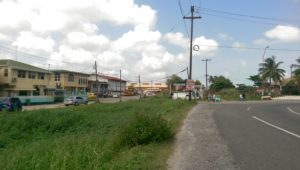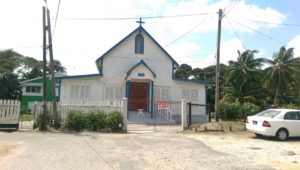Meadow Bank, East Bank Demerara, located some two miles south of Georgetown, has undergone a significant transformation from the village it was some 175 years ago. Around that time, it was mostly populated by the Portuguese and became the centre of the Catholic Church in Guyana.

With the abolition of slavery in 1834, many of the African slaves who worked on sugar estates eagerly left the inhuman and barbaric conditions on the estates to seek their fortune and future elsewhere.
Portuguese from Madeira began arriving as indentured immigrants in 1835. By 1882, more than 30,000 Portuguese had immigrated to the-then British colony. Many settled at Meadow Bank. As a result, Meadow Bank became the centre of the Catholic Church.
Far away from home, the Portuguese indentured immigrants, inspired by the religious worship and practices on their former island of Madeira, set about recreating them at Meadow Bank.
Fr Benedict Schembri, who resided in Meadow Bank, built a church in December 1876. The patroness chosen was Our Lady of the Mount, the patroness of Madeira.
It was a devout place of worship for the Portuguese to fulfil their spiritual and religious heritage and zeal. Another aim was to encourage and inspire other Portuguese immigrants to settle at Meadow Bank. Its activities featured some of the customs and ceremonies of the churches they attended in Madeira.

Ritual masses were held at the Church and its activities included jumble sales, bazaars and religious feasts or “festas”.
Among the feasts observed and celebrated by the church at Meadow Bank were the Feast of St John the Baptist; the Feast of St Peter; and the Feast of the Holy Ghost.
For the Feast of St Peter, a Boat of St Peter was built and was lifted from the home of the promoter of the Feast by six persons along a processional path to the church. They walked to music and cheers from crowds who lined the roads.
Near the Church was a bandstand and a band played from it. Bread was distributed at the church.
The biggest ritual, however, according to reports, was the Feast of the Holy Ghost. The event began on Easter Sunday. Two Holy Ghost Flags, red in colour with a white dove in the middle, were taken by four men who were the promoters. Two girls were in the group and they sang. In the group also was a man who played the violin. The group solicited money to feed the poor. A Hymn to the Holy Ghost was sung and collections and donations were placed in a Silver Crown with a dove on top of it.
During the feast itself, beggars were fed at the school in the village. Three altars were placed in the school – one covered with silver, one on which bread was placed and the other was covered with a flag.Each beggar was given an outfit of clothes, a pair of shoes, a basket filled with food and a towel.
On occasions, the Feasts ended in bacchanalian revelry, so much so that the Bishop decided to stop the Feasts.
Passion Sunday, was, however, still observed. Members of the Catholic Guild in Georgetown walked in a procession from Georgetown to Meadow Bank carrying a Statue of Our Lady of Sorrows and one of Jesus Christ with the cross on His shoulder.
Meadow Bank today is not the same as it was many, many years ago. (Text by Peter Halder, https://peterhalder.wordpress.com)



